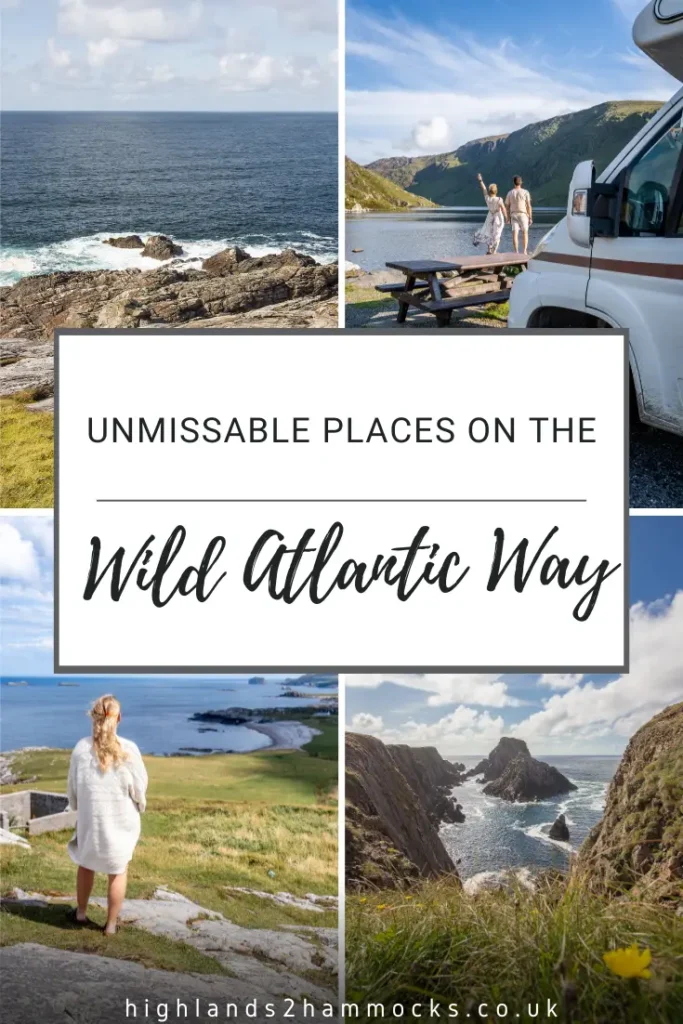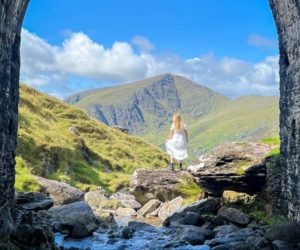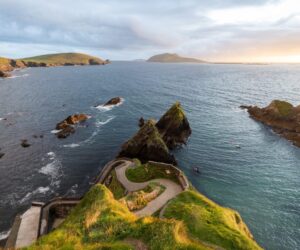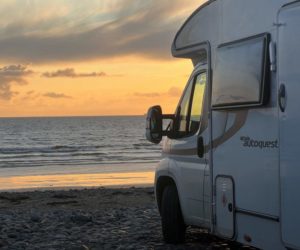In a world that seems to be getting smaller every day, the Wild Atlantic Way in Ireland offers a refreshing reminder that there are still vast and untamed corners of the world waiting to be explored. From the windswept beaches of Donegal to the rugged cliffs of Kerry, the WAW invites you to embark on a journey of discovery, where each new turn in the road brings fresh wonders to behold.
In this age of instant gratification and digital distractions, the WAW offers a welcome escape from the noise and clutter of modern life. With its breathtaking landscapes, stunning seascapes, and hidden gems waiting to be uncovered, the WAW provides a rare opportunity to slow down, switch off, and connect with the natural world in a profound and meaningful way.
Whether you’re an intrepid adventurer seeking out the wild and remote corners of the Emerald Isle or a curious traveler eager to immerse yourself in the rich culture and history of Ireland’s west coast, the Wild Atlantic Way is an experience that will leave you breathless and longing for more.
No time to read now? No problem, save a pin to your Pinterest board for later!
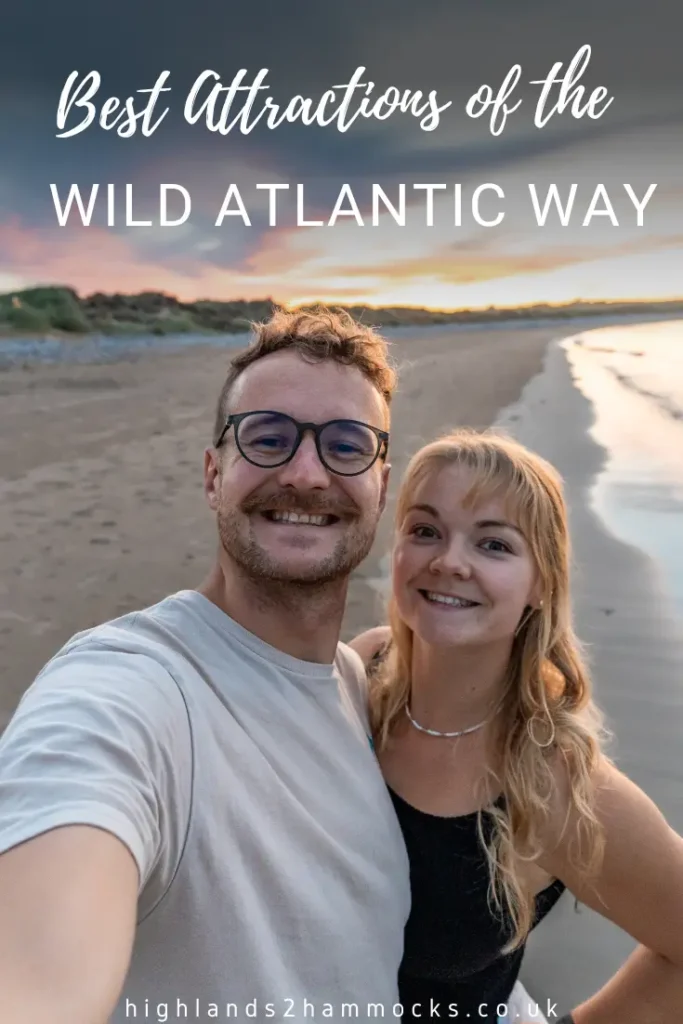
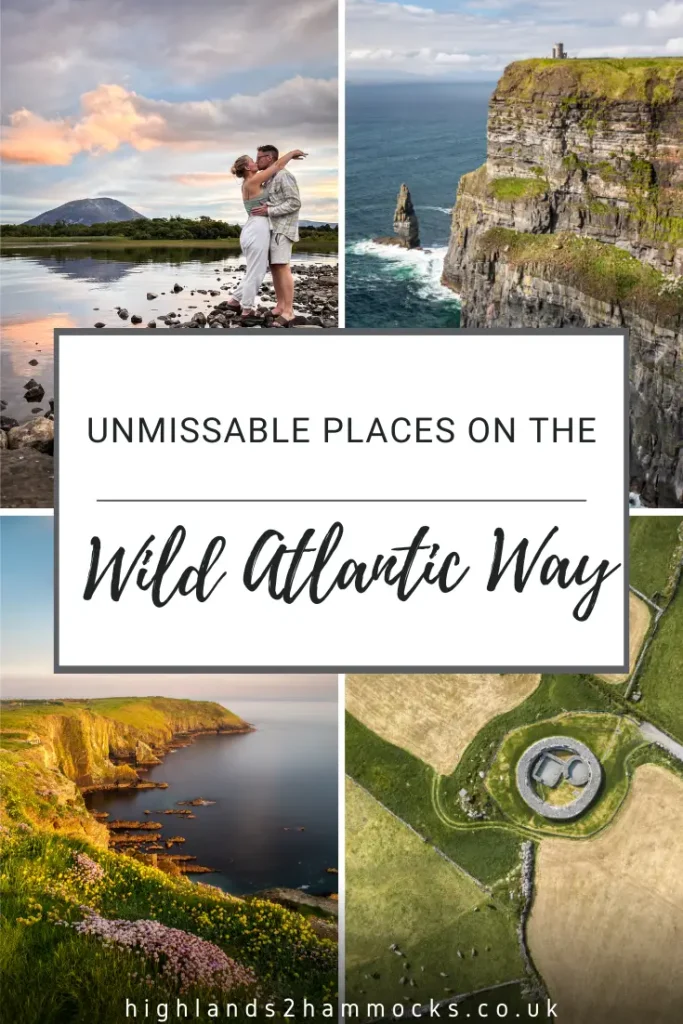
Planning Your Trip
We use the below booking platforms to plan our trips. We hope you find them useful too!
Where to Stay in Wild Atlantic Way
Explore the Wild Atlantic Way’s charming stays and choose your ideal hotel with the map below for an unforgettable coastal adventure.
Best Distilleries & Breweries on the Wild Atlantic Way
What better place is there to sample a taste of Ireland’s most famous product; the smooth, complex, and rich Irish Whiskey, and the crisp, refreshing, and flavourful Irish craft beer? The wild Atlantic coast of Ireland is home to an array of distilleries and breweries, each with their own unique story and flavour profile to tell. From the rugged coastline of County Kerry to the stunning cliffs of County Clare, the west coast of Ireland is a haven for whiskey and beer enthusiasts alike.
The production of Irish whiskey and craft beer is steeped in tradition and history, with each distillery and brewery having their own way of doing things that have been passed down through generations. From the locally-sourced ingredients to the careful ageing process, every step of the production process is integral to the final product.
Tours of these distilleries and breweries are a must for anyone visiting the west coast of Ireland, providing an opportunity to learn about the history and production of these iconic Irish beverages. Many offer tastings of their signature products, allowing visitors to sample the unique flavours and aromas that each location has to offer.
Obviously, if you are driving then you will not be able to partake in this final tasting, however, fear not as a lot of distilleries offer sample kits to be taken away and enjoyed later in the evening instead.
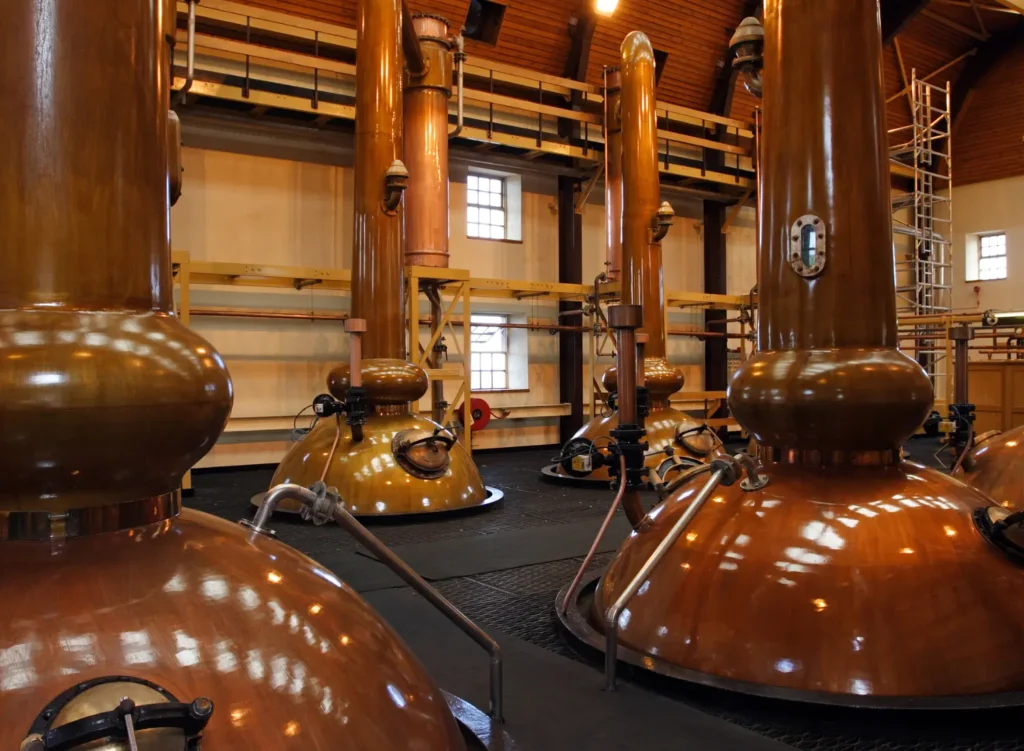
List of Distilleries & Breweries on the Wild Atlantic Way
- Dingle Distillery – County Kerry
- Clonakilty Distillery – County Cork
- West Cork Distillers – County Cork
- Connacht Whiskey Company – County Mayo
- The Shed Distillery of PJ Rigney – County Leitrim
- Achill Island Distillery – County Mayo (currently in development)
- Lough Mask Distillery – County Mayo (currently in development)
- Micil Distillery – Galway City, County Galway
- The Burren Brewery – Lisdoonvarna, County Clare
- Western Herd Brewery – Ennis, County Clare
- White Hag Brewery – Ballymote, County Sligo
- Lough Gill Distillery – Sligo, County Sligo

Best Castles on the Wild Atlantic Way
Of all the things to see on the Wild Atlantic Way, few are as impressive and awe-inspiring as the castles that dot the coastline. These ancient fortresses, built centuries ago to protect against invading armies, are a testament to the resilience and ingenuity of the people who once called this rugged land home.
The castles on the Wild Atlantic Way come in all shapes and sizes, from the towering ruins of medieval fortresses to the stately homes of wealthy aristocrats. Each one has its own unique story to tell, and exploring these ancient structures is a fascinating journey through time.
Some of the most famous castles on the Wild Atlantic Way include the majestic Kylemore Abbey, a beautiful neo-Gothic structure set amidst the stunning Connemara landscape, and the imposing ruins of Donegal Castle, which once served as the stronghold of the powerful O’Donnell clan.
Other must-see castles along the route include the stunning Blarney Castle, home to the famous Blarney Stone, and the dramatic Dunluce Castle, perched precariously on a rocky outcropping overlooking the turbulent waters of the North Atlantic.
Whether you’re a history buff or just appreciate the beauty and grandeur of these ancient structures, the castles of the Wild Atlantic Way are sure to leave a lasting impression. So pack your bags, hit the road, and prepare to be transported back in time as you explore the rich and storied history of Ireland’s wild west coast.
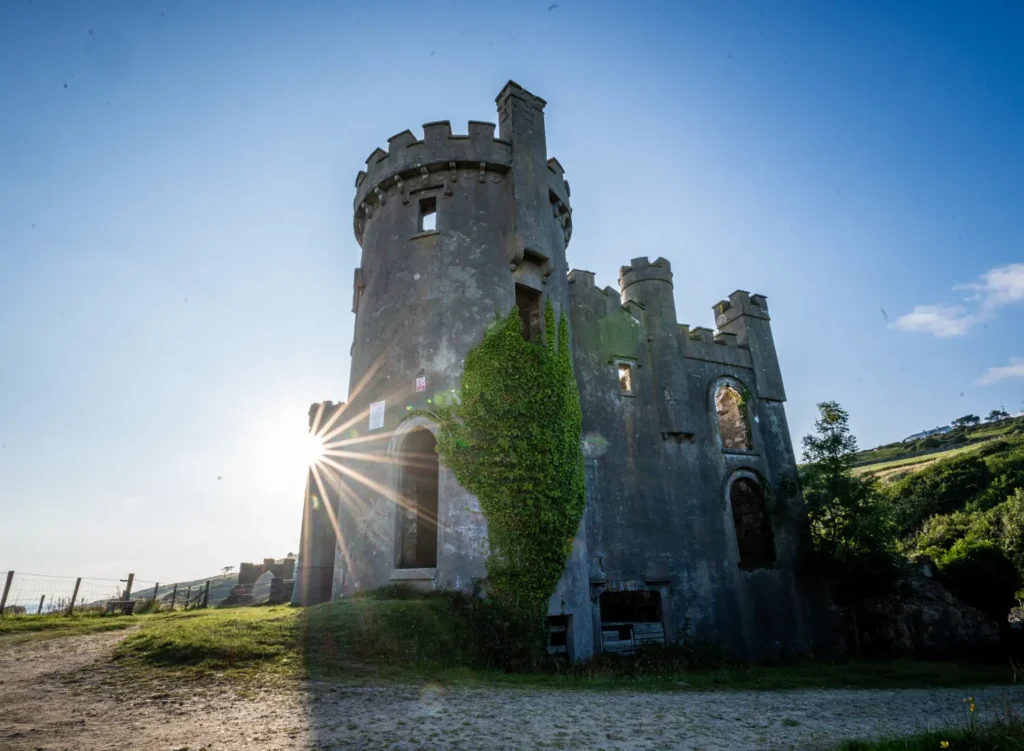
List of Best Castles on the Wild Atlantic Way
- Doe Castle, County Donegal
- Bunratty Castle and Folk Park, County Clare
- Kilkenny Castle, County Kilkenny
- Ashford Castle, County Mayo
- Kylemore Abbey and Victorian Walled Garden, County Galway
- Dunguaire Castle, County Galway
- Dunluce Castle, County Antrim
- Carrickfergus Castle, County Antrim
- Glenveagh Castle, County Donegal
- Blarney Castle, County Cork
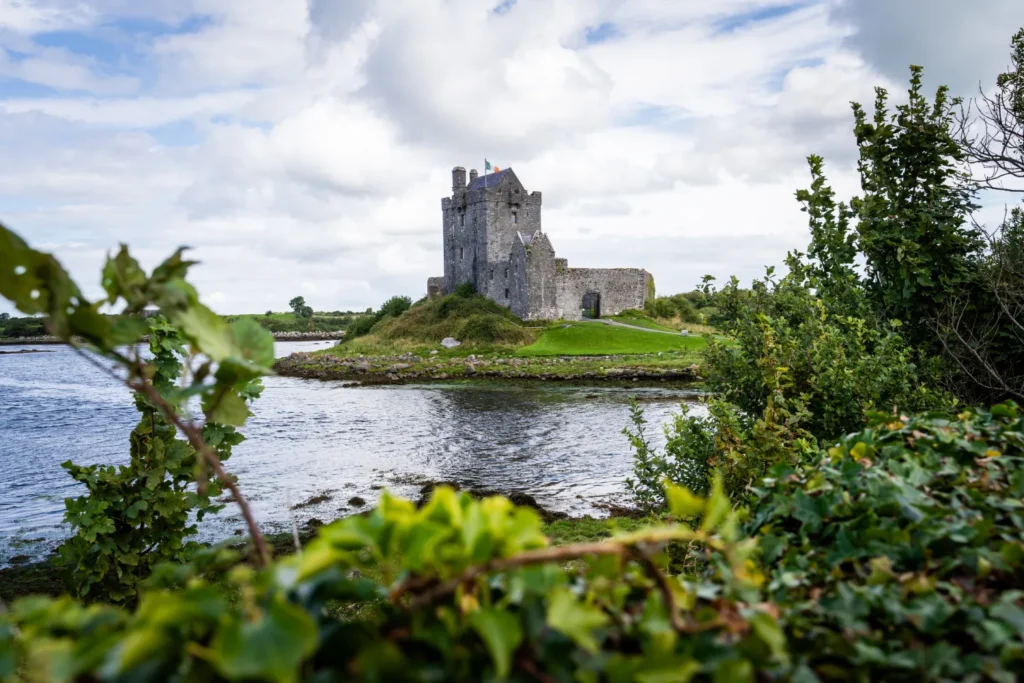
Best Mountains on the Wild Atlantic Way
The rugged and untamed coastline of the Wild Atlantic Way tells a story of unfathomable strength, power, and resilience. Over millions of years, relentless tides, unyielding winds, and crashing waves have carved out dramatic cliffs, deep fjords, and towering sea stacks. The sheer force of nature is visible in every nook and cranny of this epic coastal route, as jagged rocks jut out from the roiling Atlantic and storms rage overhead.
It is a story that began millions of years ago, when the relentless force of the Atlantic Ocean shaped and moulded the landscape into what we see today. From the jagged cliffs of Donegal’s Slieve League to the rolling waves of Kerry’s Dingle Peninsula, the raw and untamed beauty of this coastline is truly awe-inspiring.
Each rocky outcrop and steep cliff face has a unique story to tell, from the ancient geological events that shaped the land to the rich history and folklore of the people who have lived and worked along the coast for generations. The Wild Atlantic Way is a journey through time, an exploration of the very essence of Ireland’s rugged and unyielding coastline.
As you travel along the route, you will be struck by the sheer majesty of the landscape, as towering cliffs give way to sandy beaches and secluded coves. It is a journey that takes you from the highest peaks of the mountains to the depths of the ocean, revealing hidden treasures at every turn.
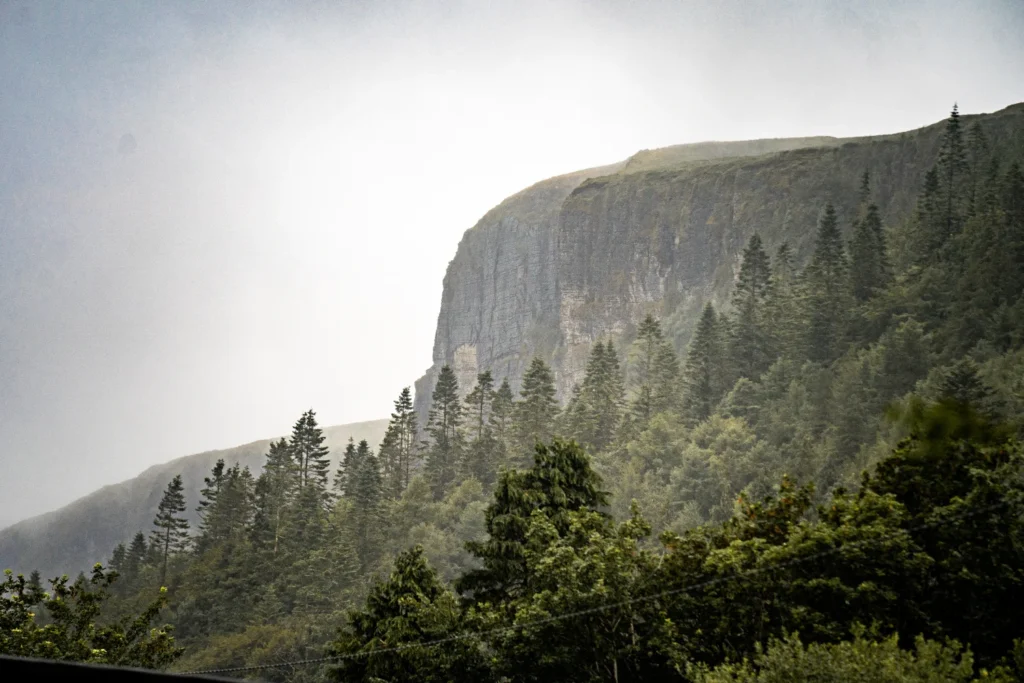
- Croagh Patrick – located in County Mayo
- Mount Errigal – located in County Donegal
- Mweelrea – located in County Mayo
- Benbulbin – located in County Sligo
- Diamond Hill – located in Connemara, County Galway
- Knocknarea – located in County Sligo
- Brandon Mountain – located in County Kerry
- Slieve League – located in County Donegal
- Macgillycuddy’s Reeks – located in County Kerry
- Twelve Bens – located in Connemara, County Galway
- Mount Brandon
- Croagh Patrick
- Nephin Range
- Ox Mountains
- Dartry Mountains
- Bluestack Mountains
- Twelve Bens Maumturks
- Sheeffry Hills
- Mweelrea Mountains
- Macgillycuddy’s Reeks

Best Waterfalls on the Wild Atlantic Way
The Wild Atlantic Way is home to some of the rainiest and windiest weather in Europe, with some areas experiencing over 200 days of rain a year. This infamous grey weather is brought by the prevailing winds from the Atlantic Ocean, which constantly batter the coastline, bringing with them an endless stream of rain and mist.
The mountains of Connemara, Donegal and Kerry bear the brunt of these wild conditions, and as a result, the area is home to some of the most stunning waterfalls in the world. These falls, such as the breathtaking Slieve League, cascade down from dizzying heights, creating a symphony of sound and motion that has to be seen to be believed. The unrelenting weather and rugged terrain of the west coast may be harsh, but it has carved out a landscape that is truly awe-inspiring.
Waterfalls such as the Glencar Waterfall in County Leitrim and the Torc Waterfall in Killarney National Park can be found along the length of Ireland’s western coast. These cascading waterfalls are truly breathtaking, and are often surrounded by rugged, rocky terrain that adds to their dramatic beauty. With so much rainfall in the region, it’s no wonder that the west coast of Ireland boasts some of the most spectacular waterfalls in the world.

- Torc Waterfall
- Gleninchaquin Waterfall
- O’Sullivan’s Cascade
- The Cliffs of Moher Waterfall
- Aasleagh Falls
- Sruth in Aghaidh An Aird (The Devil’s Chimney)
- Glencar Waterfall
- Assaranca Waterfall
- Cloghaneely Waterfall
- Cloghane Cascade, County Kerry

Best Beaches on the Wild Atlantic Way
Stretching over 2500 km in length, the Wild Atlantic Way is a coastal route along the western seaboard of Ireland that is just as rugged and awe-inspiring as the Scottish coastline. The endless stretches of sand dunes, the soaring cliffs, and the rolling waves crashing against the rocks make it a paradise for nature lovers and outdoor enthusiasts alike.
There are over a dozen Blue Flag beaches on the Wild Atlantic Way, each with its unique charm and character. From the windswept Rossbeigh beach to the tranquil Silver Strand in County Mayo, each beach has something special to offer. You can spend hours walking along the beaches, listening to the sound of the waves, and taking in the stunning views of the ocean.
If you’re feeling brave, you can take a dip in the ocean and enjoy a refreshing swim in the crystal-clear water. While the water may be chilly, it is an invigorating and unforgettable experience. You can also try your hand at surfing, kiteboarding, or sea kayaking at some of the more popular beaches along the route.
Many Irish beaches have lifeguards on duty during the summer months to ensure the safety of swimmers and beachgoers. These trained professionals keep a watchful eye on the water and provide assistance to those in need. Their presence gives visitors peace of mind and allows them to fully enjoy their day at the beach. It’s important to always follow the advice of lifeguards and pay attention to warning flags or signs to stay safe in the water.
Whether you’re looking for a peaceful, secluded cove or a lively, family-friendly beach, the Wild Atlantic Way has it all. So pack your bags, grab your swimwear, and get ready for an adventure along one of the most beautiful coastlines in the world.

- Inch Beach, County Kerry – This stunning stretch of beach is over 3 miles long and offers spectacular views of the surrounding mountains and the Atlantic Ocean.
- Lahinch Beach, County Clare – Located in the heart of Ireland’s surf scene, Lahinch Beach is a popular spot for both experienced surfers and beginners.
- Keem Bay, Achill Island, County Mayo – This secluded beach on Achill Island is known for its crystal-clear turquoise waters and breathtaking views of the surrounding cliffs.
- Barleycove Beach, County Cork – One of the most beautiful beaches in Ireland, Barleycove boasts a long stretch of golden sand and dunes, as well as views of the nearby Sheep’s Head Peninsula.
- Dog’s Bay, County Galway – This horseshoe-shaped beach is known for its stunning white sand and crystal-clear turquoise water, making it a popular spot for swimming and water sports.
- Silver Strand, County Donegal – This secluded beach is tucked away in a cove and can only be reached by foot, but its clear waters and stunning views make it well worth the hike.
- Mullaghmore Beach, County Sligo – This picturesque beach is located at the foot of Benbulben mountain and is known for its excellent surfing conditions.
- Rossbeigh Beach, County Kerry – This long and wide beach offers spectacular views of Dingle Bay and the surrounding mountains, making it a popular spot for photography.
NOTE – A blue flag beach in Ireland is an award given to beaches that meet high standards of water quality and safety.

Before You Leave for the Wild Atlantic Way
Before you set off on your way to the Wild Atlantic Way, there are a number of things you will need to get organised to ensure a smooth and enjoyable journey. These include what to pack, where to stay and what is the best insurance for your trip to Scotland. All of this is discussed in detail below.
How to Get to the Wild Atlantic Way
In order to reach the Wild Atlantic Way, there are mant ferry terminals you can arrive into from the UK.
Ferry terminals from the UK:
Fishguard to Rosslare Ferry.
Holyhead to Dublin Ferry.
Pembroke to Rosslare Ferry.
Cairnryan to Larne Ferry.
Cairnryan to Belfast Ferry.
Liverpool to Dublin Ferry.
Liverpool Birkenhead to Belfast Ferry.
Douglas to Dublin Ferry.
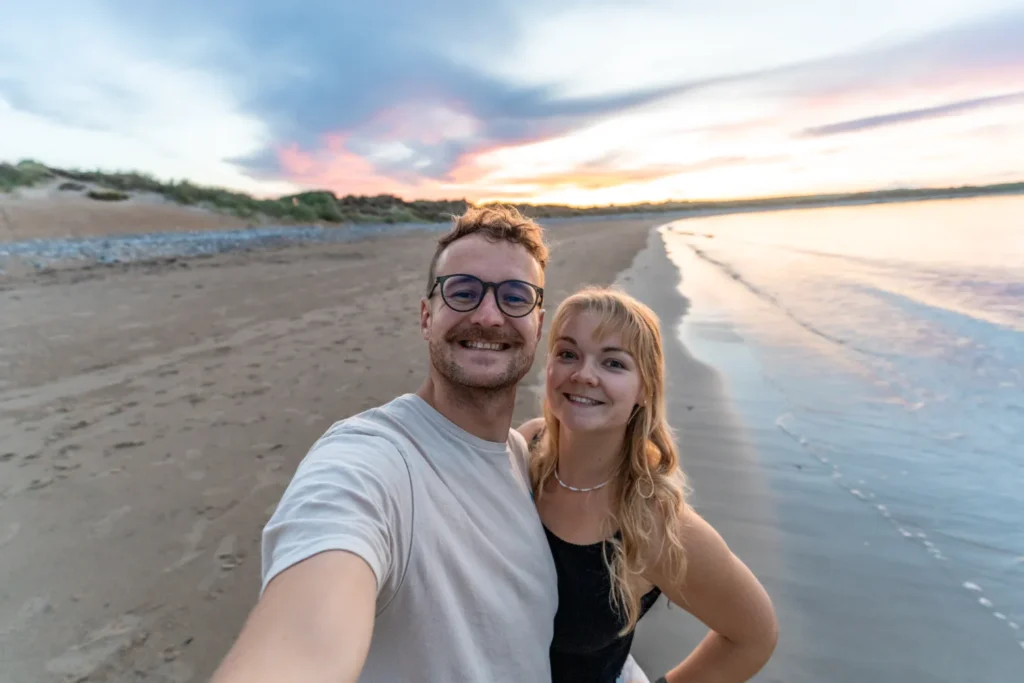
Where to Stay on the Wild Atlantic Way
Explore the Wild Atlantic Way’s charming stays and choose your ideal hotel with the map below for an unforgettable coastal adventure.
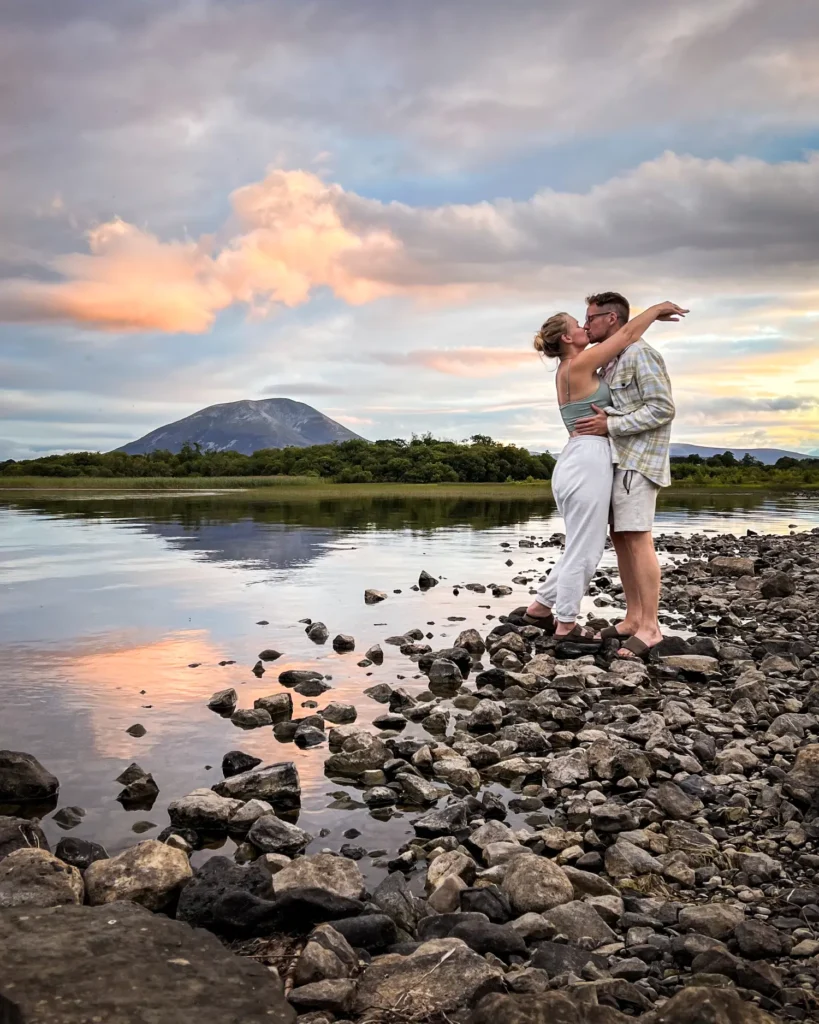
What to Pack for Your Trip to the Wild Atlantic Way
When it comes to packing for a trip to the Wild Atlantic Way there is one item of clothing that you are going to need all year round: a waterproof. It rains in Ireland on average 225 days a year on the Wild Atlantic Way, meaning that during your trip to the west of Ireland, you can expect rain at some point. Due to this, the number one item on your packing list is a good waterproof jacket.
Second to that, another item to not leave home without is a good pair of warm and, if possible, waterproof boots. A lot of the best sights on the Wild Atlantic Way can require a bit of walking to reach them and the conditions underfoot can become very muddy if it has been raining. You do not want to ruin a good pair of white trainers so pack some sturdy boots.
You will definitely need a hat and gloves during the winter months as the wind chill can be bitter.
Given the beautiful sights and scenery that you are no doubt going to see on the Wild Atlantic Way, we highly recommend packing a good camera for your trip. If you want to read more about the cameras we use and why we love them, check out the link below.
You can read what else we keep in our camera bag over here.
Photography Equipment
Main Photography Camera – Sony A7v Mirrorless Camera and Sony A7iii Mirrorless Camera
Microphone – Sony Mic ECM-B1M
Main Lens – Tamron 17-28mm f/2.8
Zoom Lens – Tamron 70-180mm f/2.8
Camera Tripod – ZOMEI Z669C Camera Tripod
Gorilla Pod – JOBY JB01507-BWW GorillaPod
Action Camera – GoPro Hero 11 and Insta 360 One RS
Drone Camera – DJI Mavic Pro 3
Camera Bag – Wandrd PRVKE 41L and The Nest by Tropicfeel
Phone Tripod – Manfrotto MKPIXICLAMP-BK, Mini Tripod with Universal Smartphone Clamp
Sturdy Phone Tripod & Selfie Stick – ATUMTEK 61″ Selfie Stick Tripod, Sturdy Phone Tripod Stand with Wireless Remote
Hard Drives – LaCie Rugged Mini, 5TB, 2.5″, Portable External Hard Drive
SSD – SanDisk Extreme Pro 1TB Portable NVMe SSD
Travel Adapter –Worldwide Travel Adapter Universal Travel Plug with 4 USB Ports+Universal AC Socke
What is the Best Travel Insurance for the Wild Atlantic Way
I know travel insurance is the least enjoyable thing to purchase and look at when you’re planning a trip, however, you wouldn’t want to be without it in the event that something happened. Accidents can happen anywhere and the extortionate medical bills will ruin your trip if you are not covered.
To ensure you have a stress-free trip with no worries about potential medical bills, make sure you cover yourself when you travel. We can recommend using SafetyWing, a backpacker-friendly and cheap insurance company that provides good coverage and support. It is also nomad-friendly, unlike most other insurance companies, meaning you do not need to worry about being out of your home country for too long.
Get a quote for your travel insurance right here and get covered!

So there you have it, a list of the best things to do on the Wild Atlantic Way. If you are visiting this incredible country and have any other questions on what to expect, leave us a comment down below. We love to chat about this stuff! If you have already been, let us know how it was!
Also, remember to share this with your friends and family that you are going to share this amazing experience with. Sharing is caring and we want to ensure that everyone is fully prepared to maximise their experience completing this stunning road trip.
If you are planning an Ireland trip soon then check out our other Ireland content right here. Come and find us on social media to see where we are currently exploring. Tag us in your photos from your stay and we will share them with the rest of our community of explorers and backpackers.
Read Now:
- A Complete Guide to Visiting the Ring of Kerry on Ireland’s Wild Atlantic Way
- The Best Dublin 2 Day Itinerary – The Ultimate Guide for a Perfect Weekend in Dublin
- Camping in Ireland – Best Campsites
This article may contain affiliate links that provide us with a small income. For more information read our Affiliate page.
Pin it for later!
